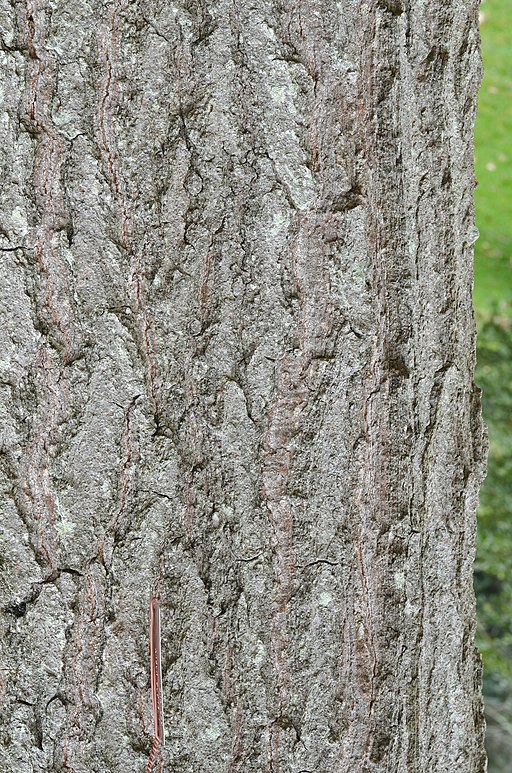Timberpedia - Red Oak
Red Oak
| Latin Name: | Irish Name: | Native to Ireland? |
|---|---|---|
| Quercus borealis | No |
About the Tree
Introduced 1724 from eastern regions of North America into Britain – rare in Ireland?
Quercus Borealis -The Northern Red Oak or Champion Oak
The Latin name for oak, Quercus, means “a fine tree.”
It is easily distinguished from the native Oaks by its distinctive leaves
The leaf is very variable in size and degree of lobing, ranging from 10 to 25cm in length. There are
4 – 5 lobes on each side, each up to 5cm deep and ending in a fine “whisker”.
About the Wood
Does not match the size of native oaks, and the timber is not as durable.
Red Oak, a deciduous tree from the Beech Family (Fagaceae). The tough, heavy wood of Red Oak
has a reddish-orange coloration, and is an important hardwood for the timber industry, involved in
the production of beams, railroad ties, furniture, flooring, and other usages. Along with Pin Oak, it
is also one of the few oaks that is an important shade tree in the landscape industry, noted for its
brick-red autumn color and its rapid and vigorous growth rate.
The wood is similar in general appearance to white oak, but with a slightly less pronounced figure
due to the smaller rays. The wood is mostly straight-grained, with a coarse texture.
Red oak machines well, nailing and screwing are good although pre-boring is recommended, and it
can be stained to a good finish. It can be stained with a wide range of finish tones. It dries slowly.
The wood is hard and heavy, with medium bending strength and stiffness and high crushing
strength. It is very good for steam bending. Great wear-resistance.
Know your wood! The Timberpedia is a broad resource that aims to catalogue all the major tree species in Ireland, containing information that we’ve gathered from over two decades maintaining our natural woodland and serving Ireland’s woodworking industry.
All written material is copyright © 2021 by the Lisnavagh Timber Project.
Timberpedia
- Acacia
- Alder (Common)
- Apple
- Apple (Crab)
- Apple (Japanese Crab)
- Ash
- Aspen (Trembling Poplar)
- Beech
- Beech (Copper)
- Beech (Southern)
- Birch
- Box
- Cedar (Western Red)
- Cedar of Lebanon
- Cherry (Bird)
- Cherry (Wild) / Gean
- Chestnut (Horse)
- Chestnut (Sweet / Spanish)
- Cypress (Lawson)
- Cypress (Monterey)
- Elm (English)
- Elm (Wych)
- Eucalyptus
- Fir (Douglas)
- Fir (Grand/Giant)
- Fir (Noble)
- Fir (Silver/European)
- Hawthorn
- Hazel
- Holly
- Hornbeam
- Ivy
- Laburnum
- Larch (European)
- Larch (Japanese)
- Larch (Red)
- Laurel
- Lime
- Maidenhair Tree
- Maple (Field)
- Maple (Norway)
- Mimosa / Silver Wattle
- Monkey-Puzzle
- Musk (Olearia)
- Oak (Cork)
- Oak (Holm / Holly / Evergreen)
- Oak (Pedunculate / English)
- Oak (Red)
- Oak (Sessile / Irish)
- Oak (Turkey)
- Pear
- Pine
- Pine (Scots)
- Plane (London / Lacewood)
- Poplar (Black Cottonwood / Western Balsam)
- Poplar (Grey)
- Rowan (Mountain Ash)
- Spruce (Norway)
- Spruce (Sitka)
- Sycamore
- Tulip Tree
- Walnut (Black)
- Walnut (Common)
- Wellingtonia
- Western Hemlock
- Whitebeam
- Wild Service Tree
- Willow
- Willow (Bay)
- Willow (Crack)
- Willow (Cricket Bat)
- Willow (Goat / Sallow)
- Willow (White / Silver)
- Yew (English)
- Yew (Irish)




